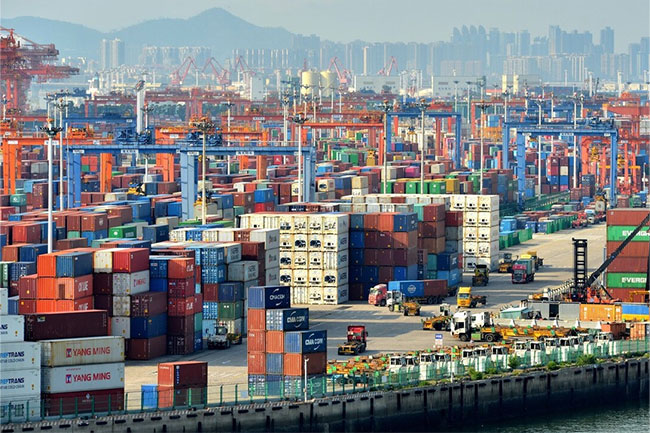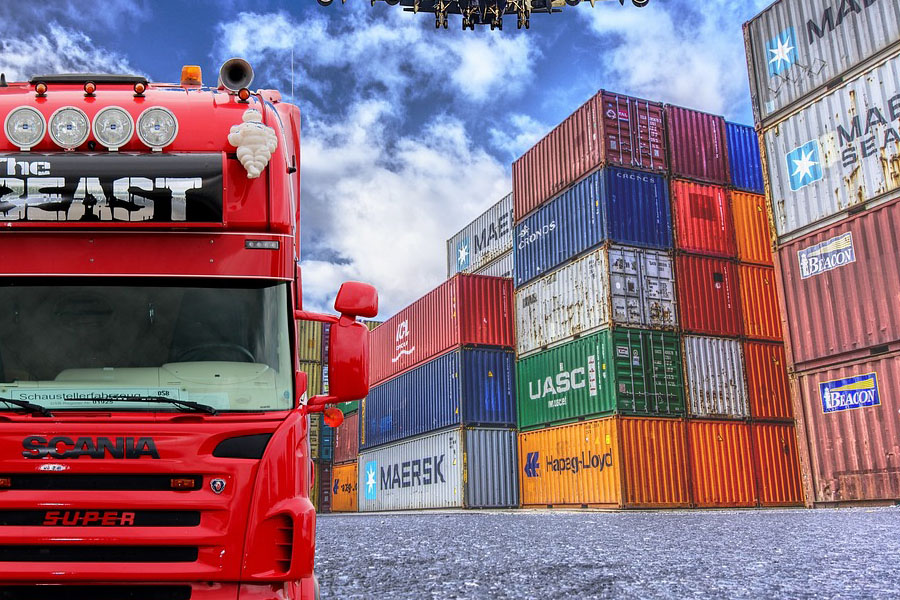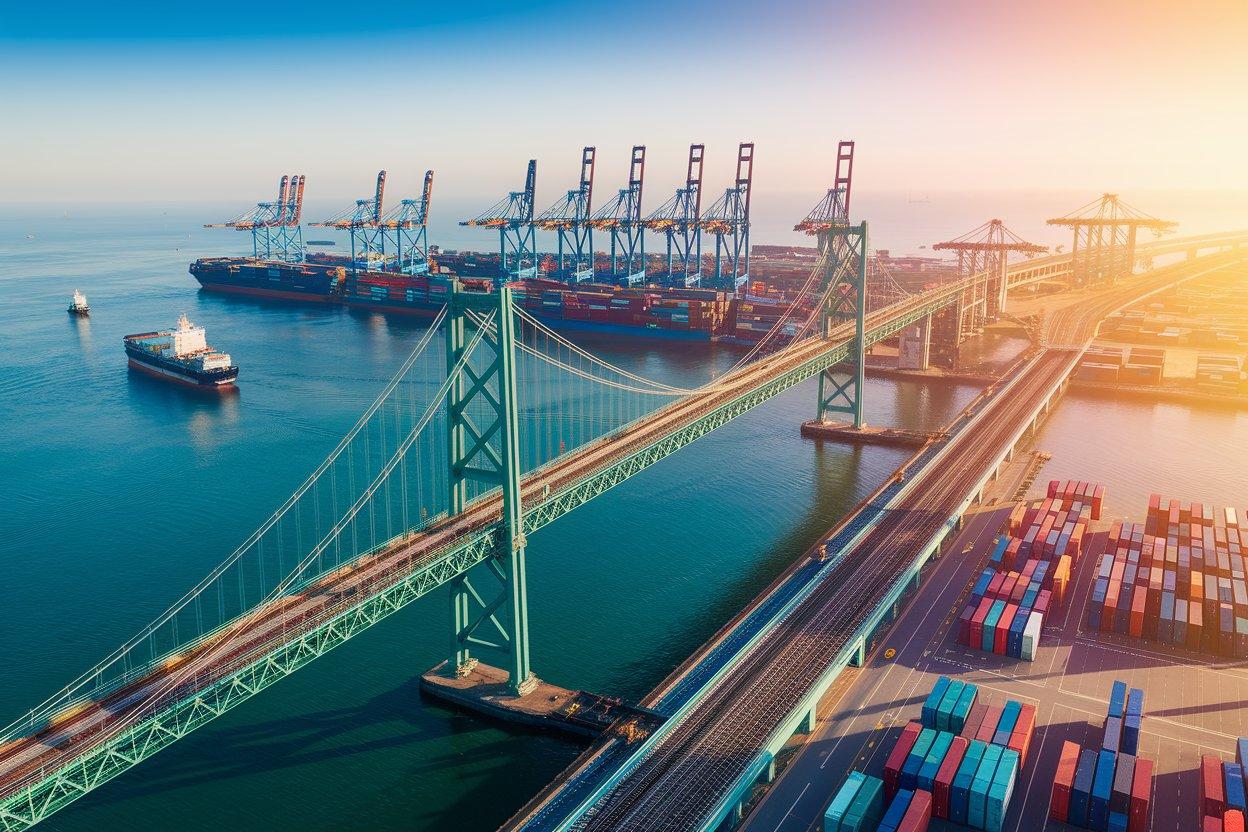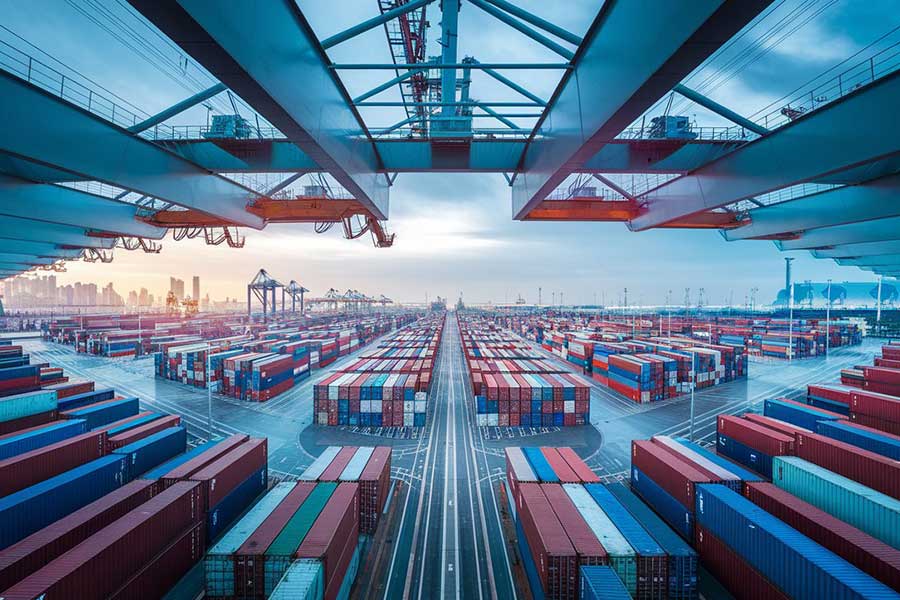- Shanghai Zhongshen International Trade Co., Ltd. - Two decades of trade agency expertise.
- Service Hotline: 139 1787 2118
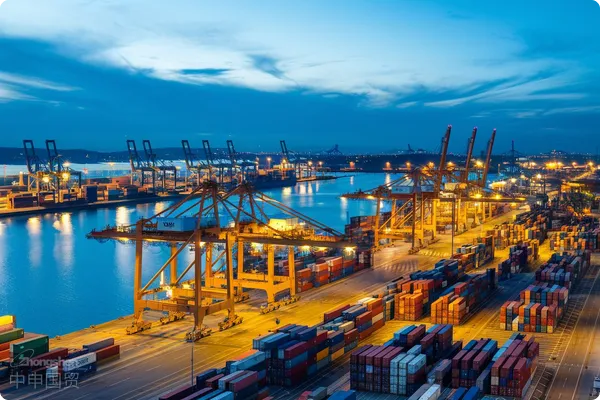
German Imported Cranes: Opening a New Chapter in Trade
In the wave of today's globalized economy, importing cranes from Germany undoubtedly brings new development opportunities for many enterprises. However, international trade processes are complex and involve numerous steps. How to successfully complete the business of importing cranes from Germany has become a focal point for many companies. Next, we will provide you with a detailed analysis of this process.
Professional document handling capability
Document processing is crucial in the business of importing cranes. When importing cranes from Germany, it is first necessary to prepare a series of basic documents, such as the Commercial Invoice, which details the name, specifications, quantity, and price of the crane, serving as an important basis for payment settlement between the buyer and seller. The Packing List describes the packaging of the crane, including the form of packaging, number of pieces, gross weight, and net weight, facilitating transportation and customs inspection. The Bill of Lading is even more...Maritime TransportationThe core document in transportation, it serves as a cargo receipt issued by the carrier to the shipper upon receiving the goods or loading them onto the ship. It also acts as proof of the transportation contract and a certificate of ownership for the goods.
Our company has extensive experience in document processing. A professional team meticulously reviews each document to ensure consistency of information across all documents, preventing delays or losses due to discrepancies. For example, a client once imported a crane from Germany, and during the bill of lading preparation, the shipper inadvertently wrote an incorrect key model parameter in the cargo description. Our documentation team identified the issue during the review process, communicated with the shipper to make corrections, and thereby avoided the risk of customs clearance problems at the destination port due to inconsistencies between the documents and the actual goods.
Efficient logistics arrangements
The logistics process directly affects whether the crane can arrive at its destination on time and safely. From Germany to China, the common options are sea freight and...Air TransportationTwo methods. Sea freight is relatively cost-effective and suitable for cranes that are large in size and heavy in weight. When opting for sea freight, we will select the appropriate container type based on the crane's dimensions and weight, such as standard dry containers, open-top containers, or flat rack containers. For some oversized crane components, open-top or flat rack containers may be necessary to facilitate loading and unloading. Additionally, we maintain close collaboration with major shipping companies to secure the most competitive freight rates and suitable sailing schedules.
Air freight is fast but comes with higher costs, making it suitable for projects with tight deadlines. When arranging air shipments, we confirm cargo space with airlines in advance and ensure that the packaging meets air transport requirements. To guarantee the safety of the crane during transit, we also purchase sufficient cargo insurance to cover various potential risks, such as natural disasters and accidents, that may occur during transportation.
Additionally, upon the arrival of the goods at the destination port, we will promptly arrange for customs clearance and inland transportation. During the customs clearance process, we are well-versed in all relevant customs regulations and procedures, enabling us to swiftly and accurately submit the required documents and complete the customs declaration formalities. For inland transportation, we collaborate with professional logistics companies to ensure the safe delivery of the crane to the designated location in accordance with the customer's requirements.
For the Russian market VTBFX Settlement AgencyAdvantages
If your import business involves the Russian market, our company offers unique foreign exchange settlement convenience through VTB. Foreign exchange settlement, simply put, refers to selling foreign exchange earnings to designated banks at a certain exchange rate to convert them into RMB. In trade with Russia, conducting foreign exchange settlement through VTB Bank provides numerous advantages.
VTB Bank is one of the major banks in Russia and holds a significant position in the Russian financial system. Compared to other banks, currency settlement through VTB is faster. Due to its extensive domestic network and efficient clearing system in Russia, it can shorten the time for funds to arrive. For example, traditional currency settlement methods may take 3–5 business days for funds to be credited, whereas through VTB, it typically takes only 1–2 business days to complete.
Additionally, VTB Bank also holds certain advantages in terms of exchange rates. It can offer relatively more favorable rates, helping enterprises reduce the costs associated with foreign exchange settlement. In terms of operational procedures, our company's professional team is well-versed in VTB Bank's foreign exchange settlement process and will assist enterprises in preparing the necessary documentation, such as contracts, invoices, customs declarations, etc., to ensure a smooth settlement process.
Southeast Asian Marketimport and exportProcess and Solution
When it comes to importing cranes from Germany and then re-exporting them to the Southeast Asian market, the process becomes more complex. First isExport ClearanceStep. We need to prepare the documents required for export customs declaration. In addition to the commercial invoice and packing list mentioned earlier, we also need to provide an export customs declaration form. The declaration form must accurately fill in all the details of the goods, including the trade method, country of destination, port of discharge, etc.
In the Southeast Asian market, trade regulations and policies vary across different countries. For instance, Indonesia may have specific technical standards and certification requirements for imported cranes. We will proactively research these regulations to help clients assess whether relevant certifications are necessary. Although we do not directly handle certification services, we will assist clients in preparing the required documentation, such as product manuals and technical parameters, and guide them in communicating with certification bodies.
In terms of logistics, shipping remains the primary method for exporting goods from China to Southeast Asia. We will select the appropriate shipping routes and ports based on the destination of the cargo. For example, when exporting to Singapore, shipping companies that call at the Port of Singapore can be chosen, as this port boasts advanced facilities and high loading and unloading efficiency. Additionally, we will collaborate with local freight forwarding companies to ensure smooth customs clearance and delivery of goods at the destination port.
In terms of foreign exchange settlement, the Southeast Asian market typically allows settlements through various internationally renowned banks. We will select the most suitable settlement bank based on the client's needs and the service advantages of the banks. Common settlement methods includeL/C(Letter of Credit), telegraphic transfer (Telegraphic Transfer, T/T), etc. Letters of credit are relatively safer, providing better protection for the rights and interests of both buyers and sellers; telegraphic transfers are simpler to operate and faster, but carry relatively higher risks. We will offer reasonable recommendations to clients based on specific business circumstances.
Challenges and Opportunities in the Current International Trade Landscape
The current international trade situation is complex and volatile. On one hand, trade protectionism is on the rise, with some countries introducing measures such as tariff hikes and trade barriers. For example, the United States has frequently imposed additional tariffs on imported goods in recent years. Although German-imported cranes have not been directly affected yet, the overall uncertainty in the international trade environment has increased. This requires enterprises to fully consider the risks of tariff fluctuations before signing trade contracts and to establish corresponding price adjustment mechanisms in the contract terms.
On the other hand, with the advancement of the "Belt and Road" Initiative, trade cooperation among countries along the route continues to strengthen, bringing new opportunities for the imported crane business. As a crucial node of the "Belt and Road," the Southeast Asia region has a robust demand for infrastructure construction, leading to an increasing need for engineering machinery such as cranes. This provides vast potential for us to expand into the Southeast Asian market after importing cranes from Germany.
At the same time, the application of digital technology in international trade has also brought opportunities for industry development. The emergence of electronic documents, online trading platforms, and other innovations has improved trade efficiency and reduced transaction costs. Our company has also actively embraced digital transformation, leveraging electronic platforms to optimize document processing workflows, enhance the transparency of logistics information, and provide customers with more convenient services.
Moderate mention of product certification services
Product certification is crucial for importing cranes from Germany. Different countries and regions have varying certification requirements for cranes. In the EU market, cranes may need to obtain CE certification to demonstrate compliance with relevant EU directives and harmonized standards. CE certification covers multiple aspects such as safety, health, and environmental protection, requiring rigorous audits of the crane's design, manufacturing, installation, and other processes.
For exports to the Southeast Asian market, apart from the specific certification requirements for Indonesia mentioned earlier, other countries such as Malaysia, Thailand, etc., may also have their own certification standards. Although our company does not directly handle certification services, we will leverage our extensive experience to assist clients in navigating the certification process, provide relevant documentation templates, and facilitate effective communication with certification bodies to ensure the smooth progress of certification work.
In summary, importing cranes from Germany involves multiple steps and a complex international trade environment. Our company leverages professional documentation handling and logistics arrangement capabilities, the VTB settlement advantage for the Russian market, and an in-depth understanding of import-export procedures in Southeast Asian markets to provide clients with comprehensiveforeign tradeAgency services, helping businesses succeed in international trade.
Related Recommendations
? 2025. All Rights Reserved. Shanghai ICP No. 2023007705-2  PSB Record: Shanghai No.31011502009912
PSB Record: Shanghai No.31011502009912
